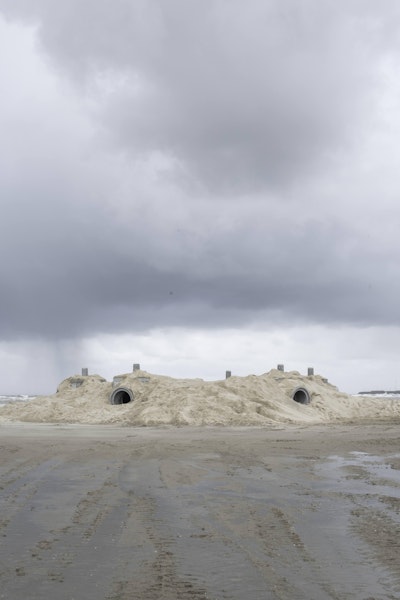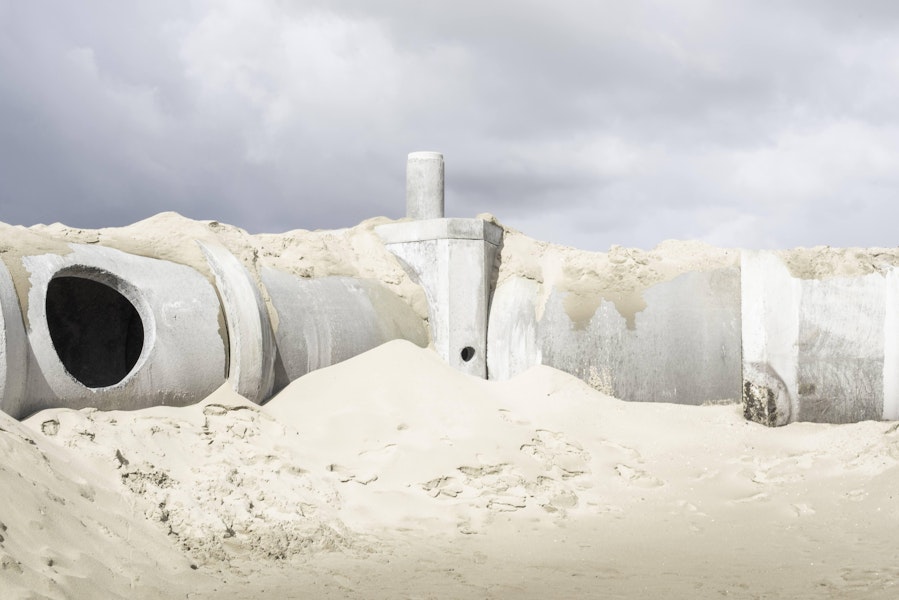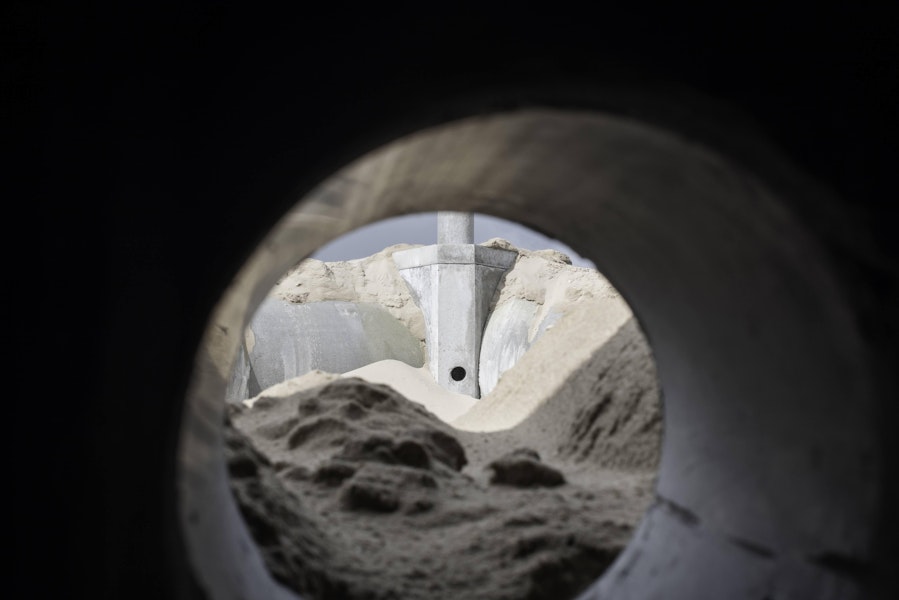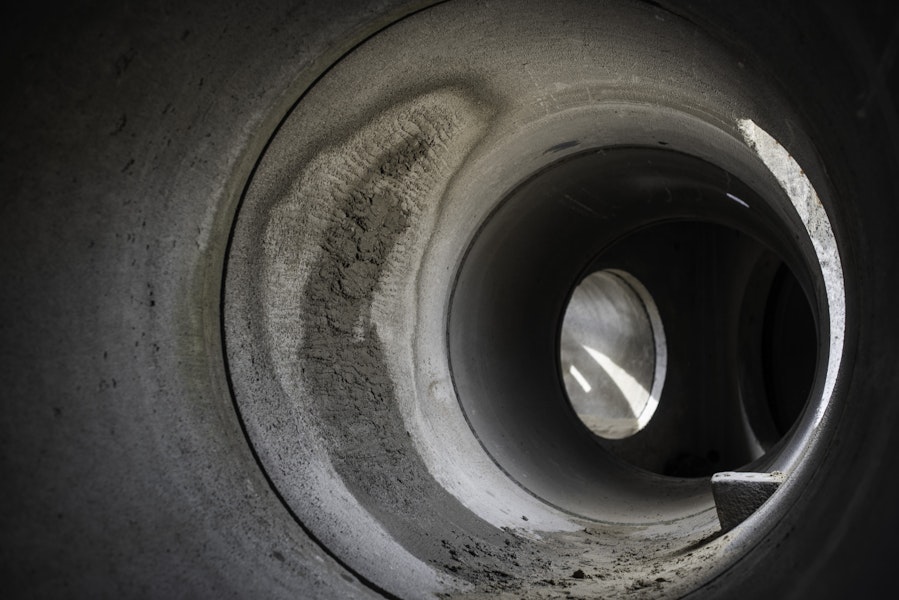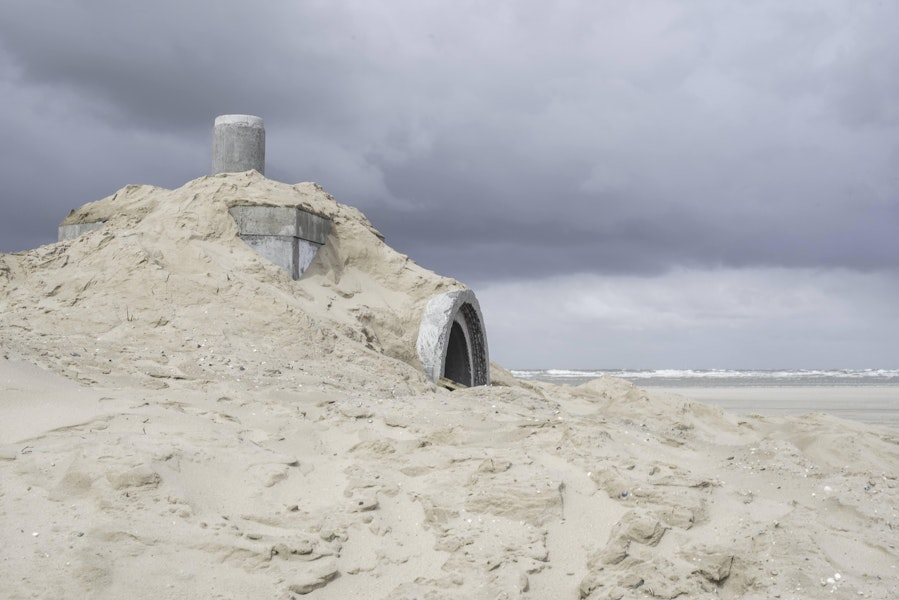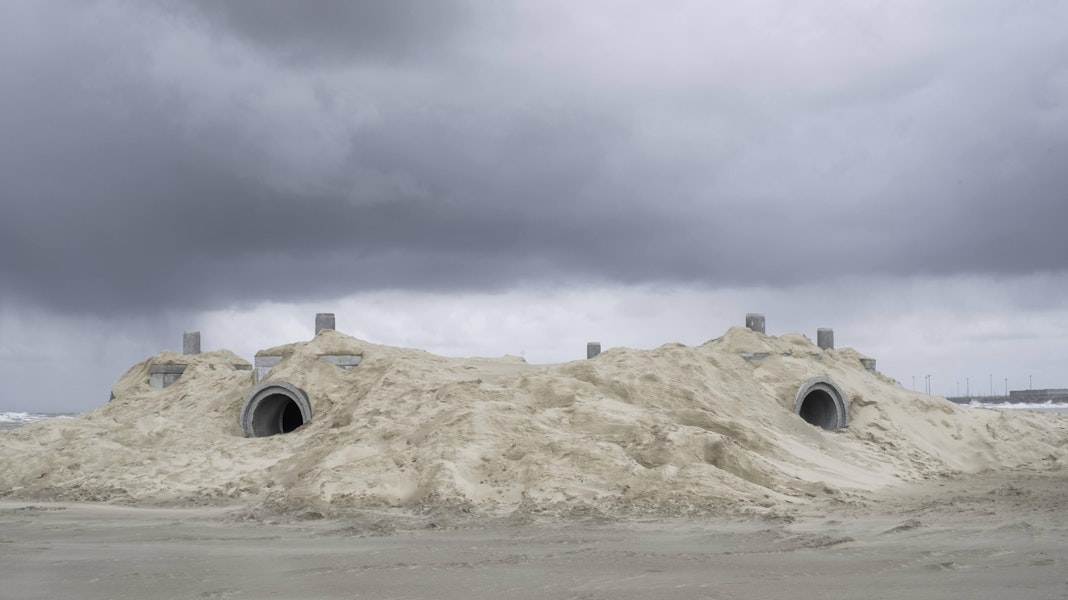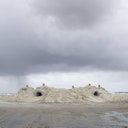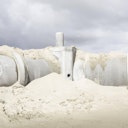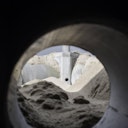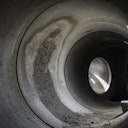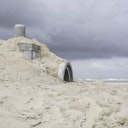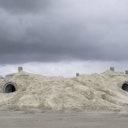Monumental structure and remarkable chimneys
Designed for the beach at Zeebrugge, Star of the Sea attracts attention from afar thanks to its expansive volume and remarkable chimneys. Built from cylindrical tubes, triangular inspection chambers and interchangeable parts, the work refers to several architectural elements that can be recognised while walking along the Belgian coastline: a bunker, a fort, a pavilion, a sandcastle or a playground on the beach. This alienating, monumental presence in Zeebrugge – both a port and seaside resort – explores the interaction between art, industry, nature and ecology.
A play of light and shadow, sounds and smells
Anyone who enters Star of the Sea will find themselves in a tunnel. The interior spaces are filled with interplays of light and shadow, sounds and smells. Walkers are invited to explore the space: to reflect, sit, play and interact with each other and the environment. The openings offer ‘periscopic’ panoramas of the industrial port, the dunes, the sea, the seafront villas ... They are all part
of Zeebrugge’s multifaceted, contrasting landscape, which is atypical for the Belgian coast.
Star of the Sea, a barometer for change
Star of the Sea is part of artist Ivan Morison’s exploration of how art interacts with the public space. Porosity and uncertainty are thus integral aspects of the creative process. The work is sited next to a section of the beach that is being reclaimed by nature and where a dune is slowly forming. Star of the Sea is in constant interaction with the forces of nature: wind, sand and the tidal cycle, which will gradually transform the work during the months it is on view in Zeebrugge. The concrete temple – surrounded by sand – reflects time and impermanence. Star of the Sea as a barometer for change.
Star of the Sea is a co-production with Beaufort 2024 and one of the twelve art and architecture installations that can be seen as part of Bruges Triennial 2024: Spaces of Possibility.







